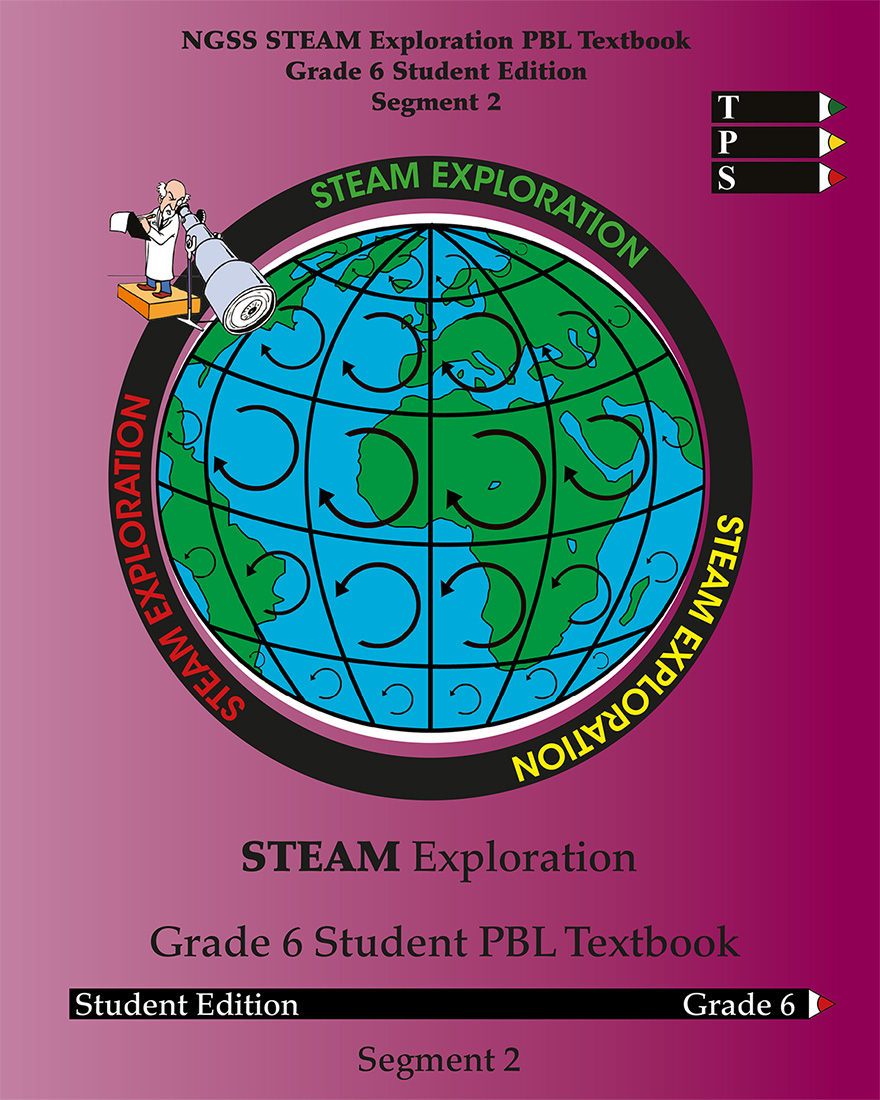The Exploration student, by grade, by segment textbook contains cross curricula activities for the named segment and includes Vignettes, Science is A Verb labs for conceptual learning, traditional expository text, Arts projects aligned to the arts standards and NGSS, Natural science outdoor and reader book activities, together with word wall, science maker and tiered assessments with rubrics, all aligned to the NGSS. The teacher will set out STEM projects for each segment and there is a separate STEM project guide which is cross referenced within the student text. The lessons involve deeper analysis and thinking than in STEAM into NGSS and are recommended if higher critical thinking is targeted. STEAM projects, built by professors at CeMaST, ISU, and or professors from Alaska, follow the DAPIC process. Students lead and they design, assess, plan, implement and communicate within small groups. Students compare and contrast living and nonliving things between States. The teacher or parent is a facilitator. Focus questions appear in the Science is a Verb lab section and seeing is believing…and understanding. The expository text section, 'The Science' clearly explains content and provides key vocabulary and additional focus questions. Arts and reader book projects provide visual and tactile assessment and the science maker and assessment tool questions provide by DCI/SEP/CCC analysis for teachers and parents to pinpoint and resolve misconceptions. STEAM Exploration is built to ensure that all students use critical thinking, problem solve and connect content across science disciplines. The entire TPS program is based on the concept that students learn best by doing, and a Vignette creates conceptual understanding for students in an innovative way.
Studies show that 93% of educators believe this to be true, but less than 50% do a single project once a year. Most curricula claim to provide 'hands-on' instruction, but very few actually teach that way. If projects are included at all, they are reserved for the end of the unit after instruction has occurred. They are used only as a follow-up application, and then, only if time (and funding) permits. The TPS Program puts the project first because students learn best by doing.
STEAM Exploration Student Edition – Grade 6 Segment 2
$13.02
STEAM Explorations is the higher level TPS integrated curriculum and has been developed to create a strong foundation of the knowledge and skills laid out in the framework, helping prepare students to enthusiastically and confidently approach progressively more advanced concepts and skills across the grades. Each lesson addresses a performance expectation in one of the three major science disciplines, Life Science, Physical Science and Earth and Space Sciences which is the vehicle through which the performance expectation will be executed, a disciplinary core idea and a cross-cutting concept. Lessons are grouped sequentially by common disciplinary core ideas. Students learn to practice science through processes used by scientists and engineers. STEAM Exploration lessons are constructed to invite students in to explore a concept. The program comprises a STEM project guide, Teacher and Student by Segment texts, Vignettes, 3 tiered assessments with rubrics, and online assessment tools and libraries; TPS STEAM Science/ELA/Math/Crosscutting/Special education PSHE Library and Reteach and After school projects.
By making observations of natural phenomena, constructing simple models of a system or phenomenon that can be used to test their ideas, analyzing data, obtaining information from reliable resources or formulating an argument supported by evidence.
Focus questions and suggested data collection formats are used to guide, but not limit, their investigations. A brief reading introduces and provides some background on the topic and raises questions. Focus questions are used to rouse curiosity, initiate thinking and to guide the direction of investigation, the interpretation of collected data and the formulation of arguments.
| Format | Softback Black & White |
|---|---|
| State | California, National |
| STEAM Program | > Science, > Next Generation Science Standards – Integrated Level 2 (STEAM Exploration) |
| Edition | Student Edition Book |
| Grade | Middle School, Grade 6 |

